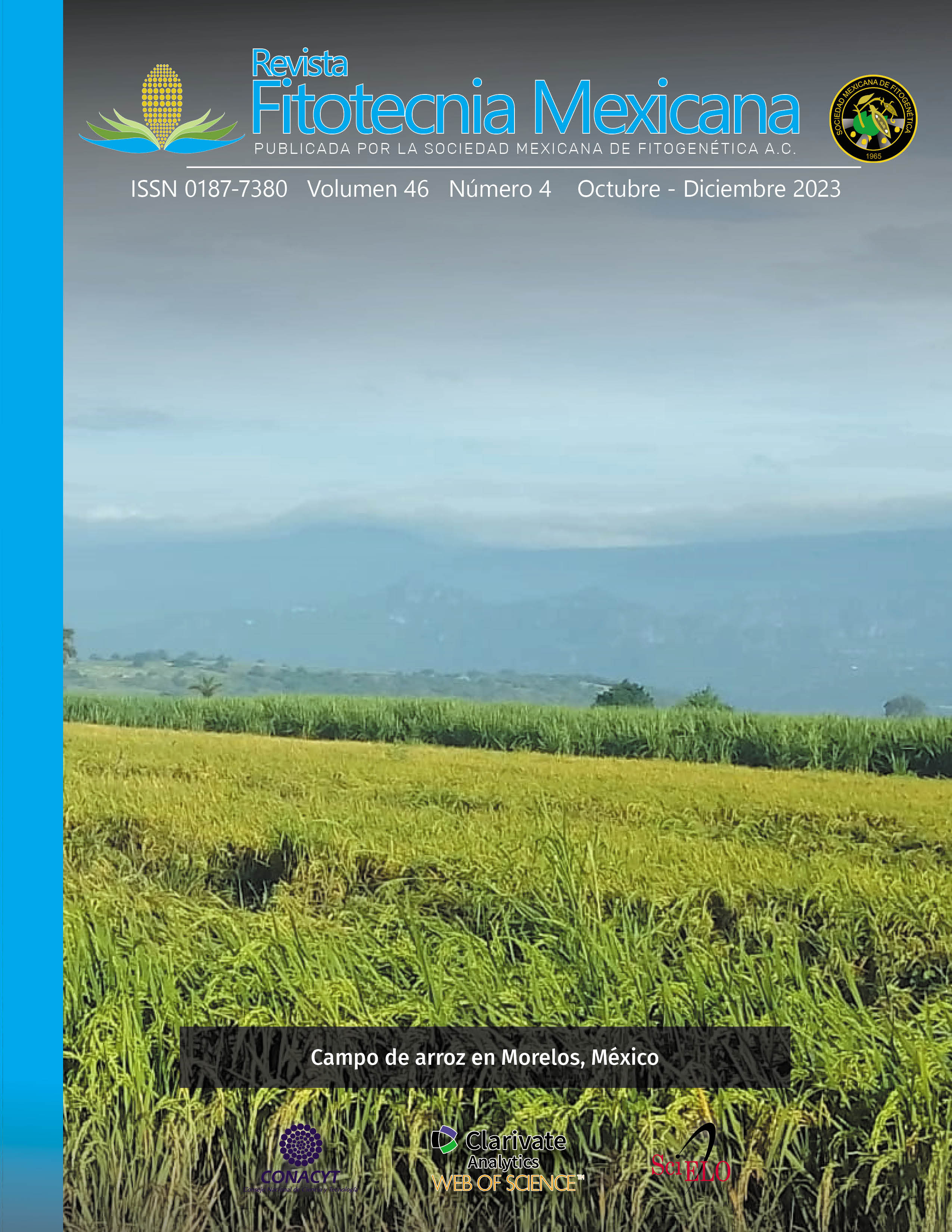IDENTIFICATION OF PHYSIOLOGICAL RACES OF Puccinia graminis f. sp avenae ERIKSS. & HENNING CAUSING OAT (Avena sativa L.) STEM RUST IN THE HIGH VALLEYS OF MEXICO
Main Article Content
Abstract
In Mexico, the area planted to oats (Avena sativa L.) has increased considerably from 450 thosands to 700 thousands ha in the last 15 years, because it is an alternative when traditional crops such as maize and beans are damaged or not planted. The most important disease in this crop is stem rust caused by the fungus Puccinia graminis f. sp. avenae. The aim of this study was to identify the fungal physiological races present in the High Valleys region of central Mexico. In 2014, 170 samples of stems with signs of the disease were collected in the region, of which 138 monopustular isolates were obtained. The isolates were characterized using monogenic differentials carrying the resistance genes Pg1, Pg2, Pg3, Pg4, Pg5, Pg6, Pg7, Pg9, Pg10, Pg11, Pg12 and Pg13. From the differentials, 62 races were identified, which shows the great diversity of races in the pathogen population, which could continue to evolve and overcome the resistance of varieties in the short term. The most common races identified were TNQ (15%), TNB (9%), TLQ (7%), TNG (6%) and TPS (5%). The TNQ race was the most widely distributed in the oat-producing areas of the High Valleys of Mexico. The percentages of virulence of isolates for genes Pg1, Pg2, Pg3, Pg4, Pg5, Pg6a, Pg7 and Pg9 were larger than 75 % and for Pg11, Pg12 and Pg13 were 57, 62 and 67 %, respectively. The lowest percentages of virulence of the isolates were observed in Pg8, Pg10, Pg15 and Pg16. This is the first detailed study on the identification of P. graminis f. sp. avenae races present in Mexico during 2014 which will serve as a basis for analyzing the evolution of the pathogen in subsequent studies.

